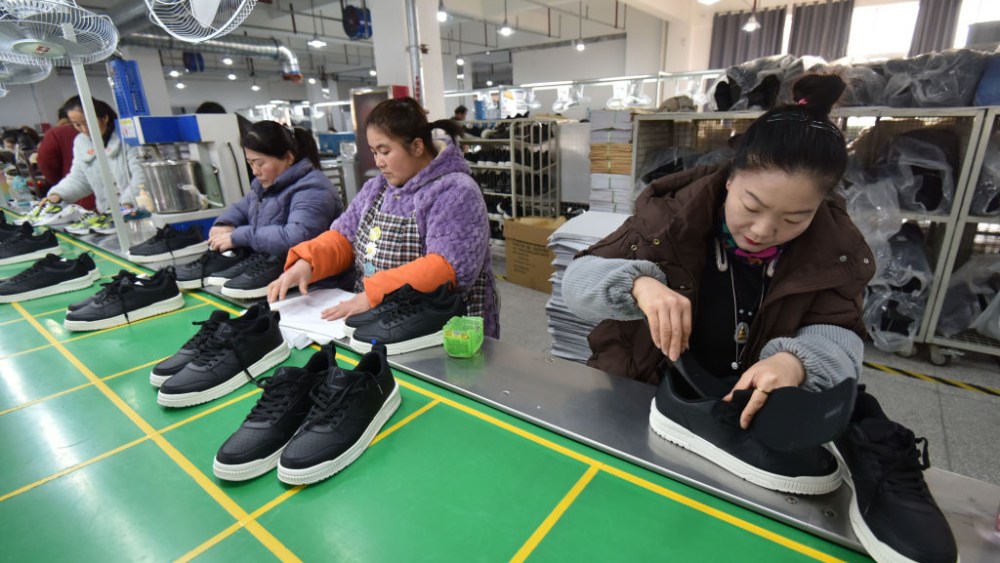Ten years ago, when Footwear News turned 70, the production shift away from China was underway.
“China’s escalating commodity prices and wages, as well as environmental concerns and shipping headaches” were leading factors, FN reported.
But change can be difficult, and China is still a huge force when it comes to footwear production. According to data from the American Apparel & Footwear Association, 61.9 percent of all shoe imports come from China, followed by 21.4 percent hailing from Vietnam. Indonesia (6.9 percent), Cambodia (3.9 percent) and India (1.3 percent) round out the top five shoe importers to the U.S.
Enter President Donald Trump.
You May Also Like
When the ardent tariff supporter took office for his first term in 2017, increasing tariffs was a goal high on his agenda. He made it happen in 2019, fueling companies to further diversify their manufacturing strategies, but they still relied heavily on China. A year later, the world shut down during the COVID-19 pandemic — and U.S. footwear partners were left reeling again.
Trump’s successor, Joe Biden, largely left his China tariff policy intact, and when Trump charged back into town for his second term, he implemented new tariff rates, including skyrocketing reciprocal tariffs, on every trading partner. Most countries received a reprieve once Trump decided to pause those hikes for 90 days.
But the trade war between the U.S. and China deepened when 145 percent reciprocal tariffs went ahead. In yet another twist and turn, a temporary deal was struck on May 12 that would reduce tariffs on China’s imports to 30 percent during a 90-day freeze period that will allow both sides more time to strike a deal.
The U.S. has been holding talks with other countries trying to negotiate new trade deals. It is expected to continue with trade talks with Vietnam later this month, while a new bilateral trade agreement with the U.K. is expected to be signed soon. And following a marathon round of trade talks between the U.S. and China, the two reached an outline for a new trade deal that would set the duty rate at 55 percent. That agreement, when finalized, still needs to be signed by Trump and China’s President Xi Jinping. They have until Aug. 10 to fine-tune the deal’s terms.
But the temporary move came after some companies, including Steve Madden and Wolverine, had already moved aggressively out of China.
“The number-one concern is cost, cost, cost,” Matt Priest, chief executive officer of the Footwear Distributors and Retailers of America, told Footwear News in April. “The question for some of our members is, ‘How do we stay in business? How do we stay profitable in this kind of environment?’”
Paul Farago, president of footwear brands Jack Erwin and Ace Marks, believes Brazil and Mexico have more opportunity to become bigger production hubs, joining Italy, Portugal and Spain. The European markets have the “most complete, plug-and-play footwear manufacturing infrastructures,” although they remain somewhat dependent on China for components, he said.
Farago said brands that already have some presence in these areas might be able to shift more work to them, although even he noted that these countries can’t absorb the volume needed for the mass market.
And for all of Trump’s talk about revitalizing America’s manufacturing sector, most insiders agree that’s never going to happen, given the complexities and costs of making footwear.
“The footwear ecosystem doesn’t really exist here. It’s hard to build out our supply chains,” Pepper Harward, CEO of Oka Brands, formerly known as Okabashi, told FN last year. The company produces its own footwear in its factory in Buford, Ga., and also manufactures shoes for other brands via a sustainable closed-loop system. “Everybody’s interested in U.S. manufacturing but very few people are fully committed to it or have solid justifications for making investments there,” said Harward.
There have been pockets of activity in the sector, with notable names like New Balance, Allen Edmonds and Red Wing producing some styles here.
Still, the reality is that it’s been more than half a century since the U.S. had a firm foothold in production — and the decline of the American sector is a storyline FN has been documenting for most of its existence.
By the late 1960s, imports were rising dramatically, first from Korea and Taiwan, and later from China and Indonesia, followed by Vietnam and the Dominican Republic. The Commerce Department warned U.S. manufacturers in 1971 that they needed to automate or die. Agency officials told FN that U.S. firms wouldn’t be able to compensate for the “large and growing differential” between their wages and those of foreign suppliers.
In 1980, President Jimmy Carter granted China most favored-nation status, a move that gave the country’s imports normal tariff treatment. When Ronald Reagan became president a year later, his administration began lifting many of the trade restrictions that had been imposed against China because of its Communist government. American companies could no longer compete with China’s lower cost structure, which was helped by the Chinese government’s proclivity to provide subsidies to grow its manufacturing base.
By the late 1990s, domestic manufacturing became nearly obsolete, and the issue was not over how much production was moving offshore, but more on how to improve working conditions.
Despite those challenges — and more recent obstacles like COVID — China continued to reign for decades — and remains the biggest exporter of shoes to America, by far.
But will Trump’s latest moves finally be the tipping point? It’s the billion-dollar question that no one can answer.



